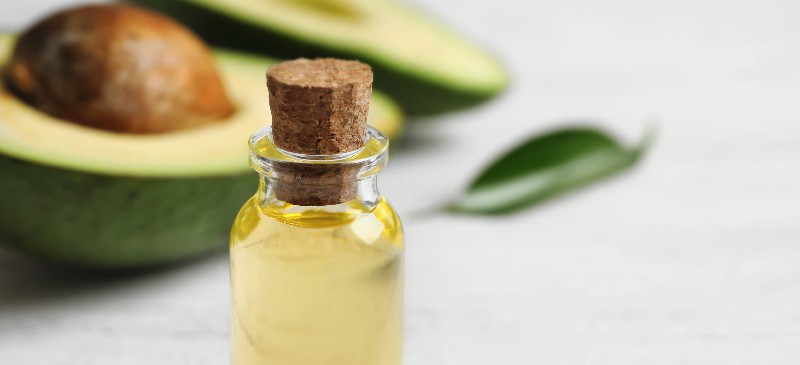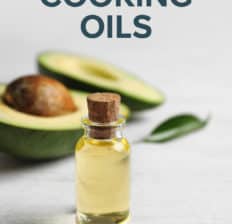This Dr. Axe content is medically reviewed or fact checked to ensure factually accurate information.
With strict editorial sourcing guidelines, we only link to academic research institutions, reputable media sites and, when research is available, medically peer-reviewed studies. Note that the numbers in parentheses (1, 2, etc.) are clickable links to these studies.
The information in our articles is NOT intended to replace a one-on-one relationship with a qualified health care professional and is not intended as medical advice.
This article is based on scientific evidence, written by experts and fact checked by our trained editorial staff. Note that the numbers in parentheses (1, 2, etc.) are clickable links to medically peer-reviewed studies.
Our team includes licensed nutritionists and dietitians, certified health education specialists, as well as certified strength and conditioning specialists, personal trainers and corrective exercise specialists. Our team aims to be not only thorough with its research, but also objective and unbiased.
The information in our articles is NOT intended to replace a one-on-one relationship with a qualified health care professional and is not intended as medical advice.
Top 8 Healthy Cooking Oils (Plus, the Ones to Avoid Entirely)
April 17, 2023

When it comes to healthy cooking oils, it may seem like there are endless options to choose from. Navigating the cooking aisle can be a daunting task on its own, and selecting which cooking oil is the best fit when it comes to your recipe can make it even more challenging. With so many factors to consider — from smoke point to flavor to nutritional content and beyond — even looking at a complete cooking oils list can be incredibly overwhelming.
So what is the healthiest oil to cook with, and which ones should you nix from your kitchen cabinet altogether? Let’s find out.
What to Look For
There are tons of different types of cooking oil out there, each of which brings a distinct flavor and unique set of health benefits to the table. However, not all cooking oils are created equal, and there are many types of cooking oil and benefits that you may want to consider next time you hit the grocery store.
First of all, it’s important to keep cooking oil smoke points in mind based on which type of cooking method you’re planning to use. Cooking oils with low smoke points can oxidize and break down under high heat, leading to the formation of harmful, disease-causing free radicals. Therefore, when your recipe calls for frying, sautéing or roasting, it’s best to select a cooking oil with a high smoke point.
Meanwhile, healthy cooking oils with low smoke points can be used to top off cooked dishes or amp up the flavor of dips, spreads and dressings instead.
Certain cooking oils also have distinct flavors, which can alter the taste of the final product. Walnut oil, for example, can supply a bit of nuttiness to dishes while sesame oil has an intense flavor that is well-suited for Asian cuisines.
Top 8 Healthy Cooking Oils
1. Avocado Oil
- Reason: Avocado oil is great because it’s high in heart-healthy monounsaturated fats and has one of the highest smoke points of all cooking oils, making it one of the most versatile and easy to use.
- Smoke Point: 520 degrees Fahrenheit
- Benefits: Avocado oil is loaded with oleic acid, a type of monounsaturated fatty acid that is incredibly healthy, and also contains lutein, a type of antioxidant that can help preserve vision and eye health. Not only that, but other promising research suggests that compounds extracted from avocado could reduce joint pain and stiffness in those with osteoarthritis.
- Best Ways to Use: You can use avocado oil for cooking or baking in just about any recipe, thanks to its high smoke point and mild flavor. Plus, it can also be drizzled over salads, smoothies, dips and spreads to bump up the content of heart-healthy fats.
2. Ghee
- Reason: The milk solids and water in this form of clarified butter have been removed, creating a final product that contains a higher concentration of fat than regular butter. It’s high in saturated fat, has a high smoke point, and can be used in a variety of dishes and recipes.
- Smoke Point: 485 degrees Fahrenheit
- Benefits: Compared to other cooking oils, such as soybean oil, heating ghee has been shown to produce lower amounts of toxic, carcinogenic compounds, such as acrylamide. In animal models, it’s also been shown to increase levels of “good” HDL cholesterol and protect against the formation of breast cancer cells.
- Best Ways to Use: Ghee works well when sautéing veggies or spread over grains, meats or baked goods. Alternatively, simply swap ghee in place of butter in any cooking or baking recipe for an extra boost of benefits.
3. Coconut Oil
- Reason: Coconut oil is a great source of medium-chain triglycerides (MCTs), which are a type of saturated fatty acid that are jam-packed with health benefits and medicinal properties.
- Smoke Point: 350 degrees Fahrenheit
- Benefits: The MCTs found in coconut oil are metabolized differently than other types of fat and are sent directly to the liver, where they can be used as fuel or converted into ketones. The MCTs in coconut oil have been shown to enhance metabolism, decrease food intake and even boost brain function.
- Best Ways to Use: There are plenty of ways to use coconut oil for cooking, and it can easily be substituted for other oils or butters using a 1:1 ratio in most recipes. You can also add a scoop to your morning coffee or smoothie, drizzle it over air-popped popcorn, or even add it into your natural skin care routine as a dual-purpose lip balm, moisturizer and makeup remover.
4. Grapeseed Oil
- Reason: Grapeseed oil doubles as a good source of both polyunsaturated fats and vitamin E.
- Smoke Point: 420 degrees Fahrenheit
- Benefits: Grapeseed oil is high in vitamin E, an essential nutrient when it comes to skin health, immune function and the prevention of oxidative damage to the cells. In fact, a single tablespoon of grapeseed oil manages to pack in about 19 percent of the daily recommended value, making it a great way to help meet your daily needs.
- Best Ways to Use: Grapeseed oil should not be used in high-heat cooking because it’s high in polyunsaturated fats, which can react with oxygen to form harmful free radicals. Instead of using grapeseed oil for cooking at high temperatures, try mixing it with salad dressings, dips or baked goods to maximize the health benefits.
5. Extra Virgin Olive Oil
- Reason: Often considered the healthiest and best oil to cook with, olive oil is brimming with antioxidants and heart-healthy monounsaturated fats that make it a staple in any nutritious diet.
- Smoke Point: 405 degrees Fahrenheit
- Benefits: Studies show that adding olive oil to the diet can reduce inflammation, improve blood sugar levels and decrease several heart disease risk factors. Be sure to select extra virgin olive oil whenever possible as the best olive oil for cooking, and check the ingredients label carefully to ensure you’re getting the real deal.
- Best Ways to Use: Use olive oil drizzled over prepared meals, such as cooked vegetables, grain dishes or salads.
6. Walnut Oil
- Reason: High in omega-3 fatty acids and a wealth of powerful, health-promoting properties, walnut oil can bring a delicious, nutty flavor to your favorite recipes.
- Smoke Point: 320 degrees Fahrenheit
- Benefits: Walnut oil is rich in alpha-linolenic acid, a type of omega-3 fatty acid that can improve heart health and decrease inflammation. Omega-3 fatty acids from foods like walnut oil can also promote brain function and aid in proper growth and development.
- Best Ways to Use: Take advantage of the unique flavor of walnut oil by drizzling it over grilled fruits, veggies, potatoes or poultry dishes. You can also toss it over pasta or brush it over cooked meat or seafood dishes.
7. Sesame Oil
- Reason: Extracted from the super nutritious sesame seed, sesame oil is full of flavor and loaded with a good mix of both mono- and polyunsaturated fatty acids.
- Smoke Point: 410 degrees Fahrenheit
- Benefits: Not only does sesame oil have anti-inflammatory and antioxidant effects, but it may also help decrease levels of “bad” LDL cholesterol to keep arteries clear and reduce the risk of heart disease. It may also help relieve constipation and ease the passage of stool from the body.
- Best Ways to Use: When it comes to sesame oil for cooking, you should use it as a finishing oil and sprinkle over finished dishes for a burst of added flavor. It can be used in a variety of different recipes but works especially well with meat, poultry, noodle and rice dishes.
8. Red Palm Oil
- Reason: Thanks to its heat stability and high smoke point, red palm oil is definitely a contender for the healthiest oil to cook with. Not only is it high in antioxidants, but it’s also a great source of beta-carotene and can help boost vitamin A status.
- Smoke Point: 450 degrees Fahrenheit
- Benefits: Studies show that palm oil can simultaneously cut cholesterol levels and reduce high triglycerides to help keep your heart working efficiently. Animal models have also found that the compounds within red palm oil can improve cognitive function and enhance skin health.
- Best Ways to Use: Because of the many ethical and environmental concerns regarding palm oil, be sure to only select products that are RSPO-certified. Since it’s highly stable and has a high smoke point, you can easily use palm oil for baking, frying and roasting as a substitute for cooking oil.
Oils to Avoid, Especially When Cooking
With so many types of cooking oil out there, it can be difficult to differentiate between unhealthy and healthy cooking oils.
Avoid highly refined, heavily processed vegetable oils, such as corn oil, canola oil, soybean oil and safflower oil, which are often used in greasy foods. Not only are they often high in inflammatory omega-6 fatty acids yet lacking in heart-healthy omega-3s, but many are often derived from genetically modified crops that can be harmful to your health. Because they also undergo extensive processing, they may be more susceptible to oxidation and breakdown, which could lead to the build-up of disease-causing free radicals.
Peanut oil is another one that has pros and cons, so it should only be used in moderation, if at all.
Additionally, steer clear of cooking oil brands that use hydrogenated fats, such as margarine or vegetable shortening. These ingredients are high in trans fats, which can amp up the risk of heart disease and other health issues.
Finally, take care when cooking with essential oils. Although certain essential oils can be used as healthy cooking oils in food preparation, they tend to be very fragile, meaning they can oxidize quickly under high heat.
Only use these cooking oils on finished dishes to retain the beneficial properties and fight free radical formation, and remember that not all essential oils can be used internally.
Final Thoughts
- What is the healthiest cooking oil, and which ones should be staples in your kitchen pantry? Selecting the best cooking oil depends on which method of cooking you’re using as well as what recipe you’re making.
- Healthy cooking oils like avocado oil, ghee, coconut oil, grapeseed oil, olive oil, walnut oil, sesame oil and red palm oil each boast a unique set of health benefits and can be used in different ways.
- Meanwhile, highly processed vegetable oils and hydrogenated fats should be avoided at all costs in the kitchen to minimize the potential adverse effects on health.
- Ideally, use a good mix of all of these healthy cooking oils to enjoy the potential benefits that each has to offer and add a bit of variety to your diet.














